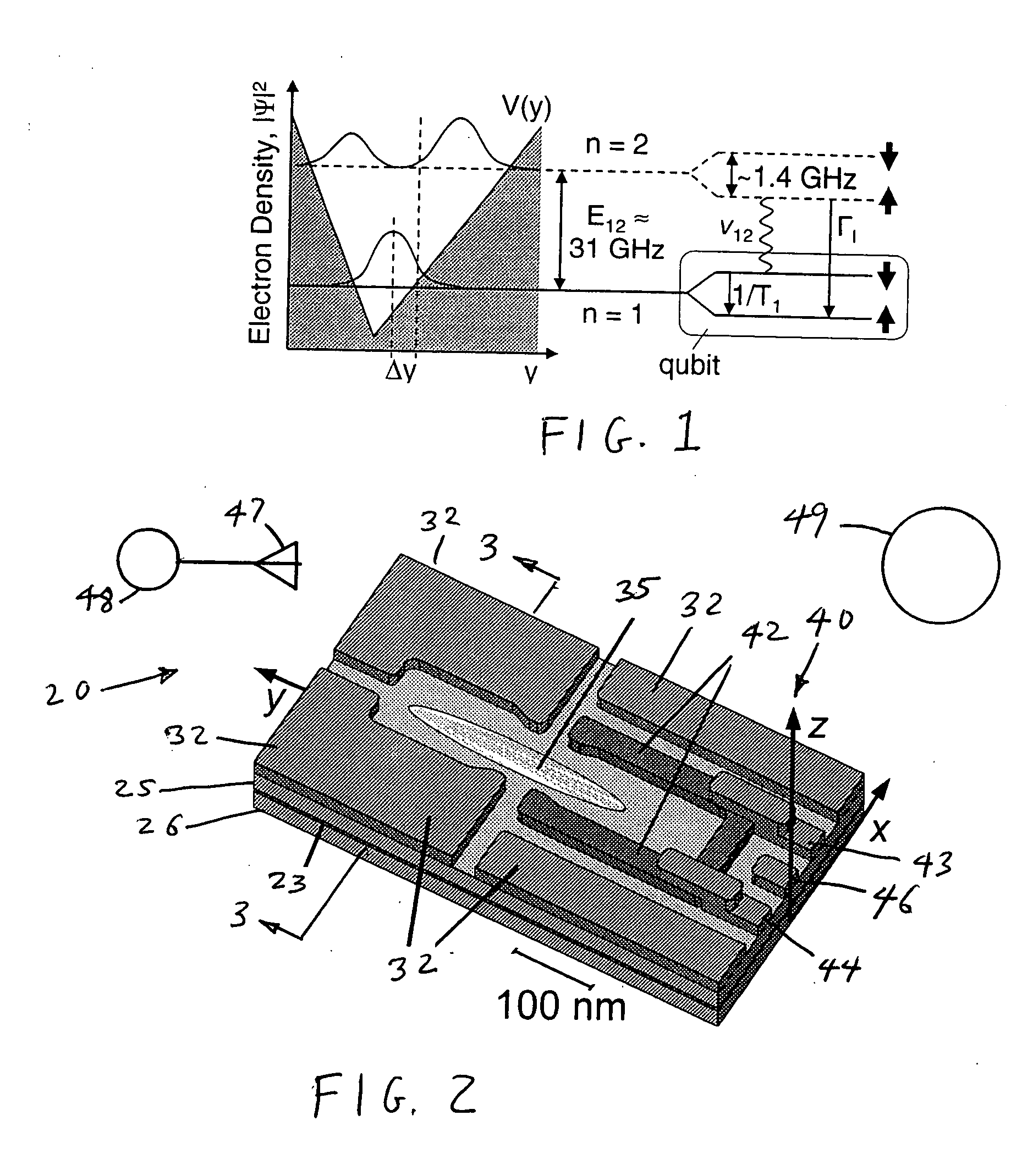Spin readout and initialization in semiconductor quantum dots
a quantum dot and readout technology, applied in the field of semiconductor quantum dot devices, can solve the problems of preparing, storing and measuring spins, and particular challenges in measuring spin qubits, and achieve the effect of rapid initialization of the spin sta
- Summary
- Abstract
- Description
- Claims
- Application Information
AI Technical Summary
Benefits of technology
Problems solved by technology
Method used
Image
Examples
Embodiment Construction
[0022] The present invention may be implemented in various semiconductor material systems. For example only, these material systems include, but are not limited to, Si / SiGe and GaAs-AlGaAs heterostructures, as described in M. Friesen, et al., Phys. Rev. B67, 121301(R) (2003), and in U.S. Pat. No. 6,597,010, incorporated herein by reference. In the Si / SiGe system, the active layer is pure strained Si, which minimizes decoherence from spin-phonon coupling as discussed in C. Tahan, et al., Phys. Rev. B66, 035314 (2002).
[0023] In the present invention, the electrons are confined in asymmetric lateral wells, such that orbital excitation results in lateral center-of-charge movement. FIG. 1 shows the first two orbital states of an electron confined to an asymmetric quantum dot, with center-of-charge positions varying by a distance Δy. If an external microwave radiation source of frequency E12 / h (where h is Planck's constant), having an energy corresponding to the difference in energy betw...
PUM
 Login to View More
Login to View More Abstract
Description
Claims
Application Information
 Login to View More
Login to View More - R&D
- Intellectual Property
- Life Sciences
- Materials
- Tech Scout
- Unparalleled Data Quality
- Higher Quality Content
- 60% Fewer Hallucinations
Browse by: Latest US Patents, China's latest patents, Technical Efficacy Thesaurus, Application Domain, Technology Topic, Popular Technical Reports.
© 2025 PatSnap. All rights reserved.Legal|Privacy policy|Modern Slavery Act Transparency Statement|Sitemap|About US| Contact US: help@patsnap.com



